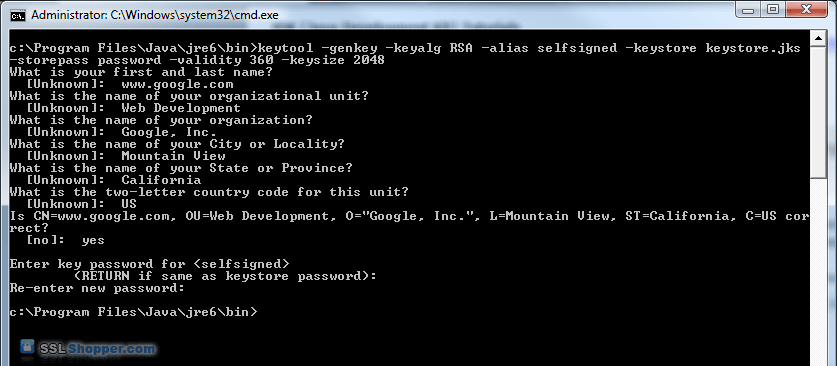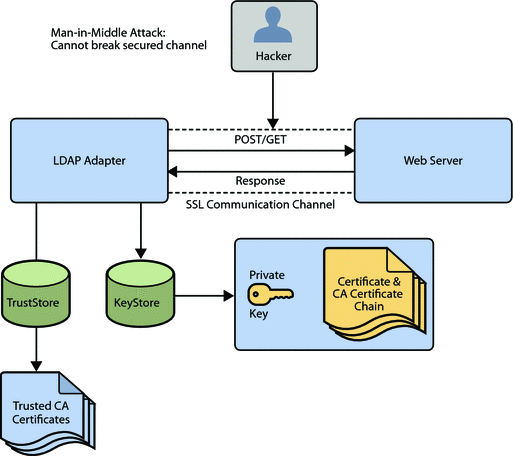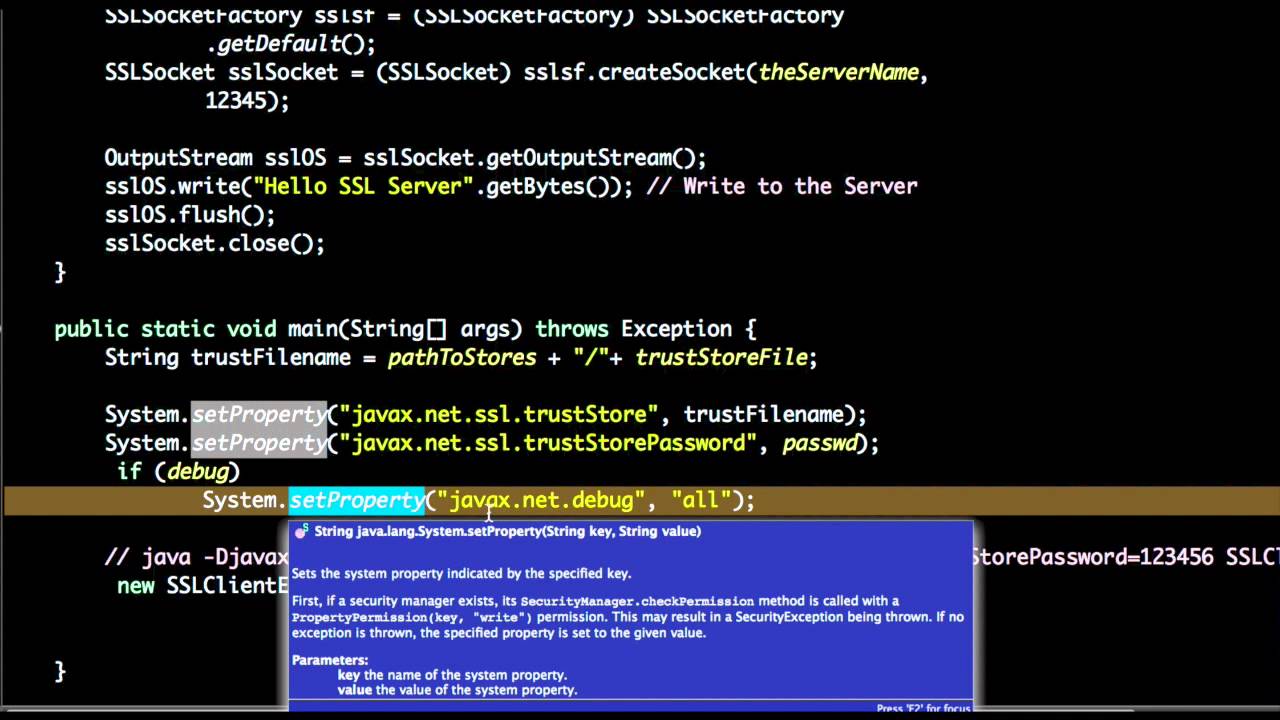How to create an SSL certificate in Java?
How to create an SSL certificate in Java?

To create an SSL certificate in Java, you can use the keytool utility that comes with the JDK (Java Development Kit). Here's a step-by-step guide:
Step 1: Create a Keystore
A keystore is a file that stores your private key and public certificate. You can think of it as a digital safe where you keep all your cryptographic assets. To create a keystore, run the following command:
keytool -genkeypair -alias myalias -keyalg RSA -keysize 2048 -validity 1095
This will generate a new keystore file named mykeystore (you can choose a different name if you like). The -genkeypair option tells keytool to generate a new key pair. The -alias myalias option specifies the alias for the key, which is used to identify it in the keystore. The -keyalg RSA option specifies the algorithm to use for the key (in this case, RSA). The -keysize 2048 option specifies the size of the key in bits (2048 bits is a common and secure choice). Finally, the -validity 1095 option specifies how long the certificate will be valid in days (1095 days is approximately 3 years).
Step 2: Create a Certificate Signing Request (CSR)
A CSR is a file that contains your public key, identity information, and other metadata. To create a CSR, run the following command:
keytool -certreq -alias myalias -keypass changeit -file mycsr.csr
This will generate a new CSR file named mycsr.csr. The -certreq option tells keytool to generate a new certificate request. The -alias myalias option specifies the alias for the key, which is used to identify it in the keystore. The -keypass changeit option specifies the password for the private key (you'll need this later when you want to sign your certificate). Finally, the -file mycsr.csr option specifies where to save the CSR file.
Step 3: Sign Your Certificate
To sign your certificate, you'll need to get a digital certificate from a trusted certificate authority (CA) like VeriSign or GlobalSign. You can also self-sign your certificate if you have your own CA. Once you have your signed certificate, you can use the following command to add it to your keystore:
keytool -trustcacerts -alias myalias -file mycert.cer
This will import the signed certificate into your keystore.
Step 4: Create a Truststore
A truststore is a file that stores the certificates of trusted CAs. To create a truststore, run the following command:
keytool -import -trustcacerts -alias mytrustedca -file mytrustedcert.cer
This will import a certificate from your CA into your truststore.
Step 5: Use Your SSL Certificate
Now that you have created an SSL certificate in Java, you can use it with your server to enable SSL/TLS communication. For example, if you're using the Apache HTTP Server, you'll need to configure the SSLEngine directive in your Apache configuration file.
That's it! You've successfully created an SSL certificate in Java. Remember to keep your private key and truststore files secure, as they contain sensitive cryptographic information.
java ssl socket example

I'd be happy to provide an example of using SSL sockets with Java!

Here's a simple example of how you can use SSL sockets with Java. This example uses the Java Secure Sockets Extension (JSSE) package, which is part of the JDK.
import java.io.BufferedReader;import java.io.IOException;
import java.io.InputStreamReader;
import java.io.PrintWriter;
import java.net.InetAddress;
import java.net.Socket;
import javax.net.ssl.SSLSocketFactory;
public class SSLClient {
public static void main(String[] args) throws Exception {
// Create an SSLSocketFactory
SSLSocketFactory sslsf = (SSLSocketFactory) SSLSocketFactory.getDefault();
// Create a new socket
Socket s = sslsf.createSocket("localhost", 12345, true);
// Get the input and output streams
BufferedReader in = new BufferedReader(new InputStreamReader(s.getInputStream()));
PrintWriter out = new PrintWriter(s.getOutputStream(), true);
// Send some data to the server
out.println("Hello, server!");
out.flush();
// Read what the server sends back
String str;
while ((str = in.readLine()) != null) {
System.out.println("Server says: " + str);
}
// Close the streams and socket
in.close();
out.close();
s.close();
}
}
And here's an example of how you can use this on the server-side:
import java.io.BufferedReader;import java.io.IOException;
import java.io.InputStreamReader;
import java.io.PrintWriter;
import javax.net.ssl.SSLServerSocketFactory;
import javax.net.ssl.SSLServerSocket;
public class SSLServer {
public static void main(String[] args) throws Exception {
// Create an SSL server socket factory
SSLServerSocketFactory ssssf = (SSLServerSocketFactory) SSLServerSocketFactory.getDefault();
// Create a new SSL server socket
SSLServerSocket sslssock = (SSLServerSocket) ssssf.createServerSocket(12345);
// Get the input and output streams for the connection
BufferedReader in = new BufferedReader(new InputStreamReader(sslssock.accept().getInputStream()));
PrintWriter out = new PrintWriter(sslssock.accept().getOutputStream(), true);
// Read what the client sends
String str;
while ((str = in.readLine()) != null) {
System.out.println("Client says: " + str);
out.println("Hello, client!");
out.flush();
}
// Close the streams and server socket
in.close();
out.close();
sslssock.close();
}
}
In these examples, we're using the SSLSocketFactory to create an SSL-enabled socket on both the client and server sides. This is the standard way of creating SSL sockets in Java.
Please note that you'll need to have a valid SSL certificate set up for this example to work properly. If you don't have one already, I can provide more information on how to generate your own!
References:
https://docs.oracle.com/javase/7/docs/api/javax/net/ssl/package-summary.html http://www.ietf.org/rfc/rfc4346.txtI hope that helps!





























